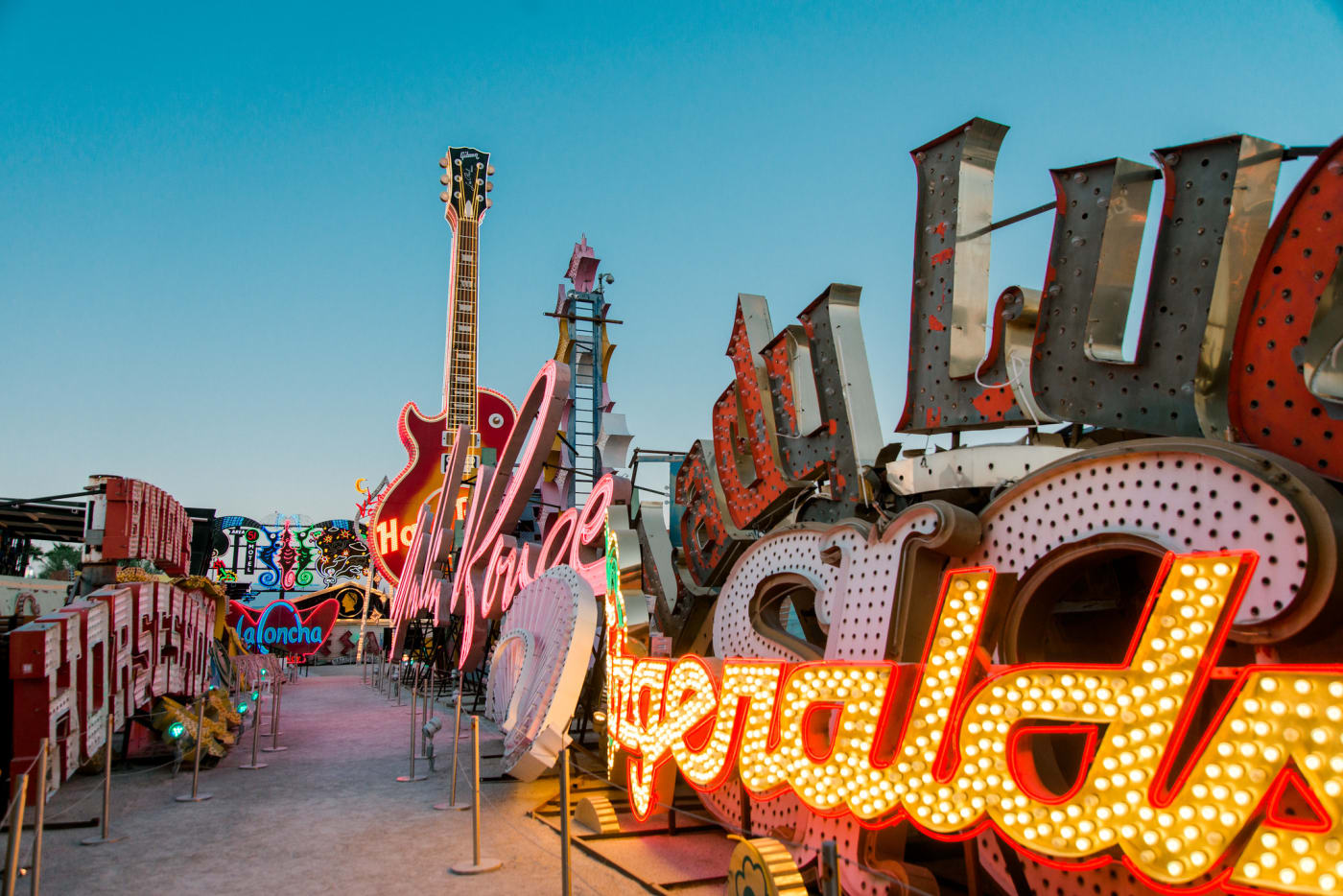Fremont Street, the famously glowing thoroughfare that runs through the heart of Downtown Las Vegas, traces its origins to 1905. In its early days Fremont Street was home to a burgeoning business district brought about by the building of a train depot erected at Main and Fremont, where the Plaza Hotel and Casino now stands.
The 1920s saw the nationwide prohibition of alcohol and later the onset of the Great Depression.
Vegas’ proximity to the construction of the Hoover Dam in 1931 meant big business for the growing community, and visitors flooded in to see the massive construction project. As luck would have it, 1931 also saw gambling become more widely legalized in the Silver State, while simultaneously laws connected to marriage and divorce were laxed making Nevada a popular destination for those looking to get hitched (or un-hitched) in a hurry.
In 1933 Prohibition was repealed and made way for taverns and casinos to set up shop along Fremont Street, they built near the busy street to catch the interest of strolling sightseers. Neon signs took center stage in the late 1920s into the 1930s turning the dark desert into a glowing spectacle of light earning Fremont the nickname “Glitter Gulch.”
While neon fell out of fashion in other parts of the US starting in the late 1960s, it thrived along Fremont Street; casino owners, sign designers and fabricators conspired to build iconic signs that reached high into the sky, towering above the visitors walking along the crowded sidewalks. The spectacle of these signs combined with the allure of clanging slot machines, comped drinks and free air conditioning beckoned visitors off the street and into the casinos.
In an effort to revitalize downtown, in 1994 Fremont Street was closed to car traffic and converted into a pedestrian walkway complete with a canopy that provides shade during the day and an LED light show at night to more than 26 million visitors annually. The canopy also helps to protect noteworthy neon signs such as Vegas Vic, the neon cowboy who has been greeting visitors since 1951. The next time you are on Fremont Street stop by and say “Howdy” to this colossal cowpoke.


















